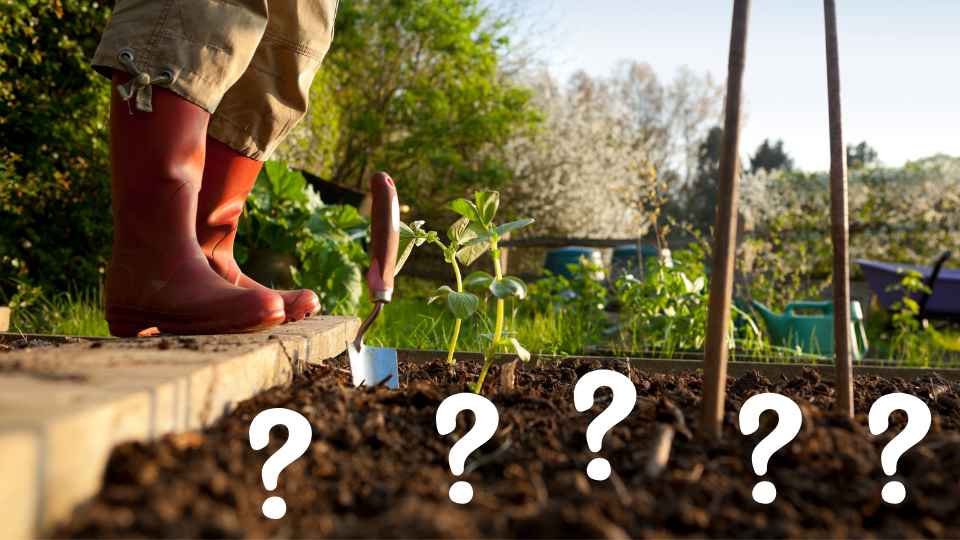
What is meant by seed dormancy?
If you've ever sown a row of lettuce seeds in the midsummer heat only to have them not even sprout,
that can be a real bummer.
But, you're familiar now with seed dormancy.
Seed dormancy is nature's way of setting a time clock that allows seeds to germinate only when the conditions are just right.
Sort of like the bedtime story of Goldilocks and the Three Bears, where the temperature of the porridge had to be just right.
What is an example of dormancy?
Thanks for asking... So here's an example of seed dormancy:
Dogwoods produce mature seeds in the fall (see photo below), but conditions are not suitable for seedling survival
going into the winter. So dogwoods have a method that keeps the seeds dormant, or in sort of a "suspended animation" until spring, when conditions are just right for germination, as well as seedling survival, AND survival of the tree.
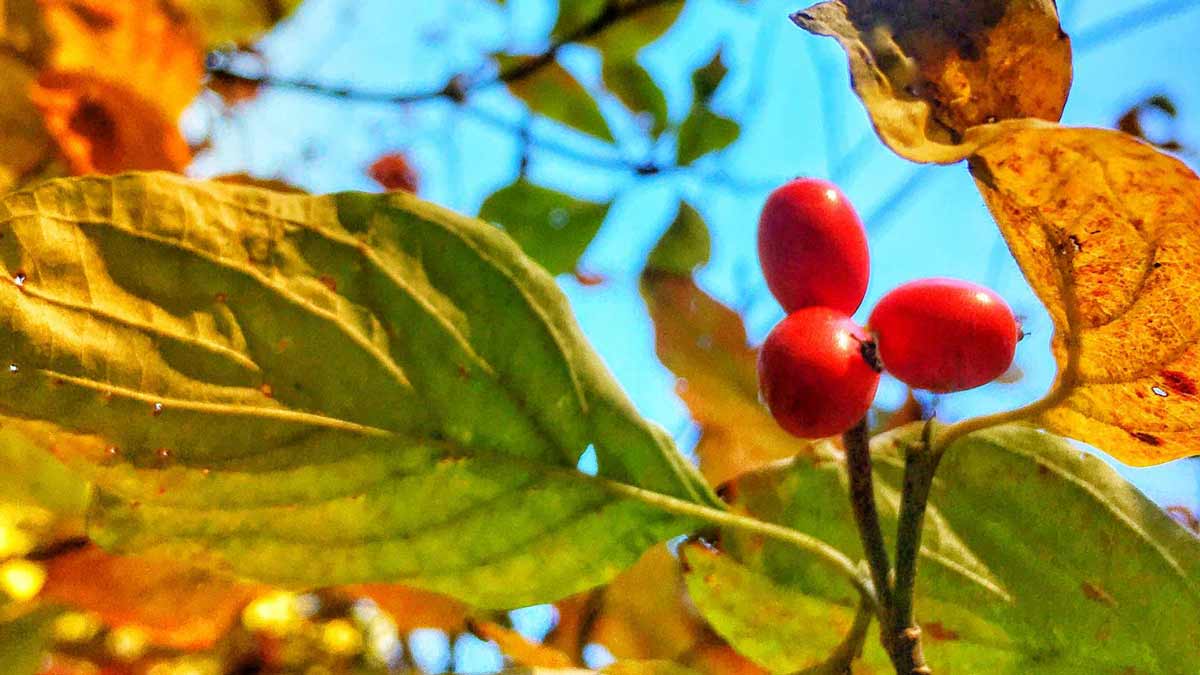
5 Reasons Why Seeds Don't Germinate
Thing is, there are many reasons why seeds fail to germinate...
1) Too much or too little water.
2) Seeds are planted too shallow or too deep.
3) The age of the seeds. Meaning, if you planted a packet of seeds that you found in the back of your garage shelves, then you might be dealing with poor quality seeds or old seeds.
QUICK TIP: MOST SEEDS LAST 3 - 5 YEARS...
BUT, Seeds like corn and onions should be used within that first year. Now for me, I grow onions from seed and I make sure to grow seeds only from seeds that I purchased that year. Photo below shows red onion seedlings.
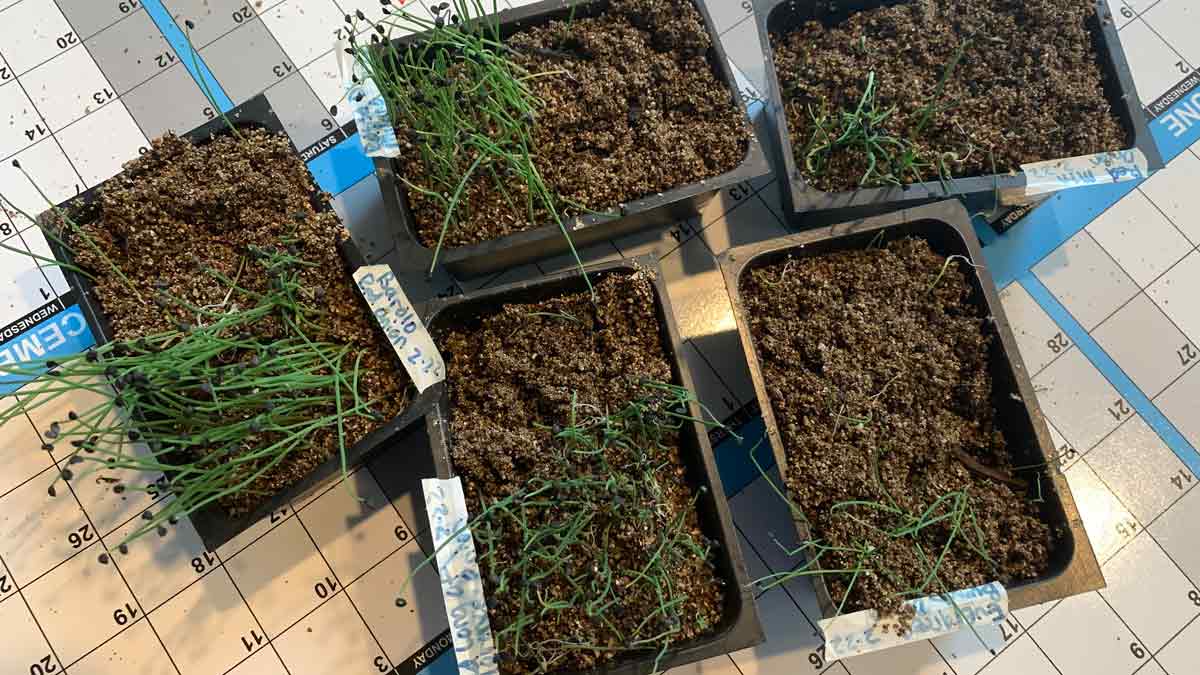
5 Reasons Why Seeds Don't Germinate (con'd)
Unwelcome wildlife!
4) Unwelcome wildlife: Your garden can become a feeding station for critters like birds, and cats, and raccoons. In our garden, sparrows love peas and carrot seeds, which scatters them everywhere.
5) Seed dormancy. Here's a video I made -- part of which was filmed during a seed starting workshop I hosted recently -- where I gave students an overview of seed dormancy, starting with some "pithy points" about seeds...
Let's say you purchased some seeds or saved some yourself, or a neighbor gave some seeds to you.
Maybe they're tomatoes, they grew last year. You're really anxious to plant, get started on the growing season, right?
But before you plant uno seed, one seed, pause and take a moment to consider the seed itself. Speaking of seeds, what is the largest seed in the world?
If you guessed the coconut, you're right! The coconut is the largest seed.
So, moving along...
Dry, flaky, smooth, round, warded, ridgy, spiky...
Seeds might look as lifeless as my February garden (see photo below) but don't be fooled.
Seeds don't spring to life when you plant them. Seeds are already alive. So inside even the tiniest dust-like grain of seed is a living plant.
Gardeners use many seeds that are actually fruits (think strawberry), and so, it's important to remember that seeds themselves are completely self-contained.
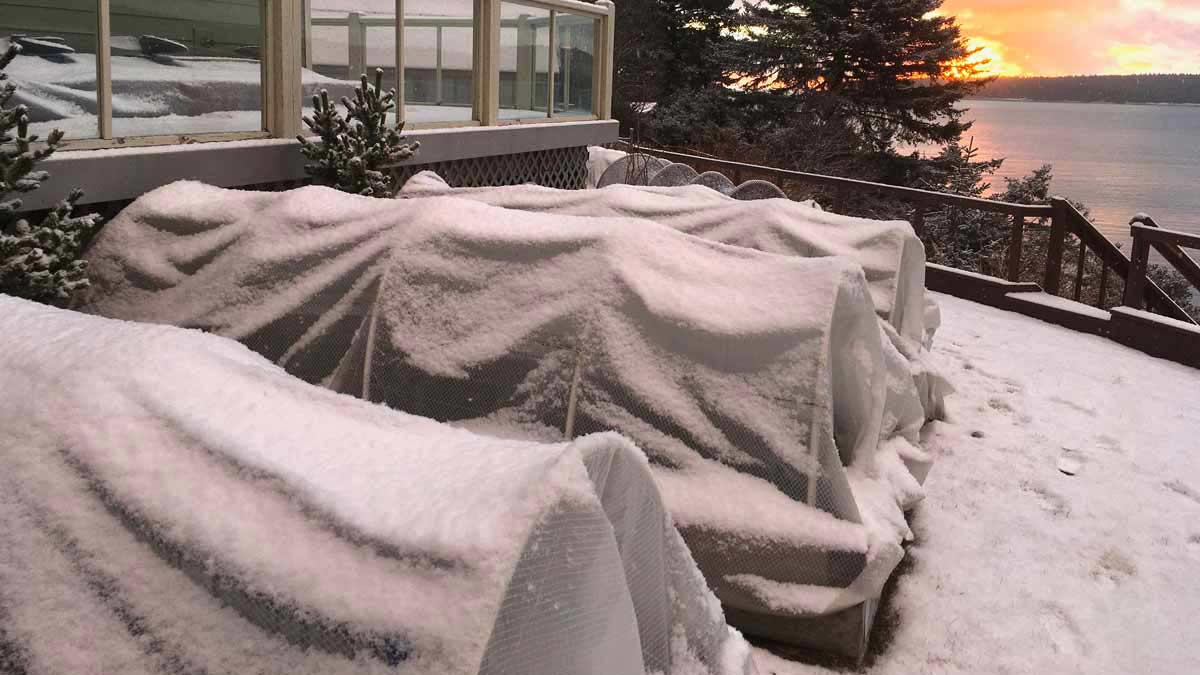
Meanwhile, here's that great word: Dormancy
So what exactly is dormancy?
First, I want to offer some reassurance to some of you who have tried to grow some seedlings and failed. There might be a little unseen factor in place here, like dormancy.
So if you've ever tried to, successfully grow a row of lettuce but it didn't work in the middle of the summer heat, or germinate Himalayan blue poppies that you bought in a gift shop, you have an idea of how dormant seeds behave. I'm sharing this with you because you might have wondered why your seeds didn't sprout in the first place.
QUICK TIP: WHY NATURE HAS DORMANCY
Dormancy is a protective device. It's designed to assure the, how should I say, continuity of the species.
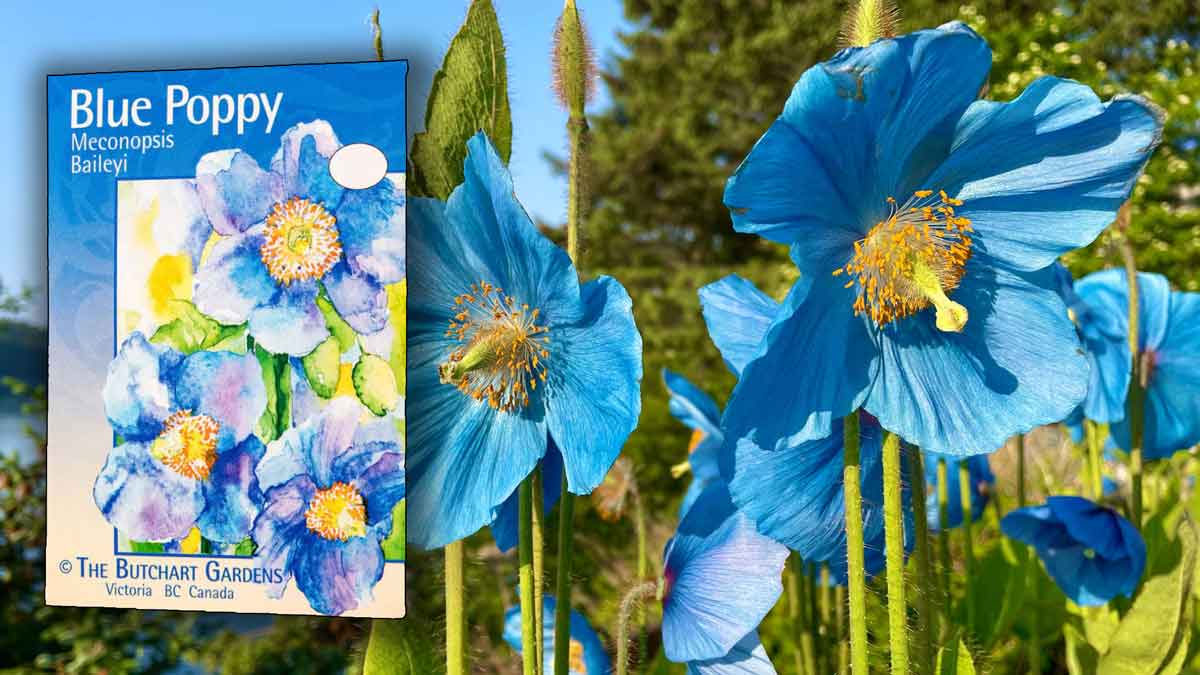
Dormancy is rarely a problem with vegetable seeds though, except for heat-sensitive seeds like lettuce and celery, and then, you know, beans and mustard, they never go dormant.
So it's often a problem when you're germinating seeds like wildflowers, trees, and shrubs. But as a gardener, you might want to break dormancy.
So how do you give seedlings the message that it's okay? That it's okay to sprout now?
So, how to break dormancy? Read on...

Two easy ways to break dormancy
1) Break dormancy with temperature
You can chill or freeze the seeds.
This happened with a friend of mine who went to Butchart Gardens in Victoria, B.C. She found out that she needed to put that packet of seeds in the freezer, because those blue poppies, (I showed you the picture above), are a Top-of-the-World plant.
They like it cool, and they need to have a freeze snap.
1) Break dormancy with light
You can also subject your seeds to light to break dormancy. And also you might know that say, Douglas fir trees, that grow in the Pacific Northwest, they, I think, require fire to break dormancy. I could be wrong there.
QUICK TIP: HOW TO PROPAGATE BLUE POPPIES
I have found the that easiest and simplest way to create more blue poppies is to divide existing plants. In this video, I talk more about blue poppies, but for starters, make sure you take lots of soil with the divided plant and keep it moist after transplanting into compost-rich soil out of too much direct (hot) sun.
One more thing about lettuce seeds...
One more thing about lettuce seeds. I know a lot of gardeners like to jumpstart their seeds on heating mats, but I have found that the additional heat can actually hinder germination of cool-loving plants, like lettuce, and parsley, and peas, and spinach.
So, just a tip: Be aware of your seeds' needs. [pun intended]
Enjoy this article? You might also enjoy these:
Who is Marion Owen?
Learn the fine art of nurturing your dream garden using organic methods that have been fine-tuned over 35 years by Marion Owen, New York Times bestselling author.
Gardening techniques that have been proven to work by Marion's students longing for their own dream garden in landscapes as diverse as North America, India, Europe, UK and Australia.
Finally, you can throw away all those harsh chemicals, as Marion only teaches methods that are in tune with Mother Nature!
Marion Owen's approach to fulfilling your dream garden will save you hundreds of dollar. At the same time bring natural vitality to you, your family and the planet.
Start to grow flowers, herbs and vegetables using a methodology in harmony with the natural environment.

